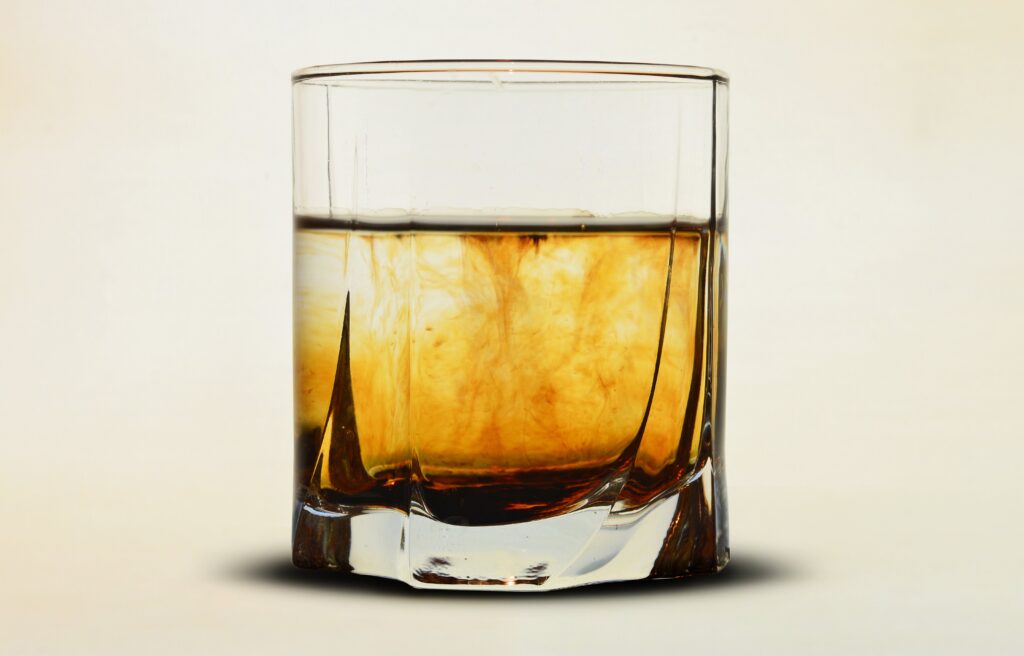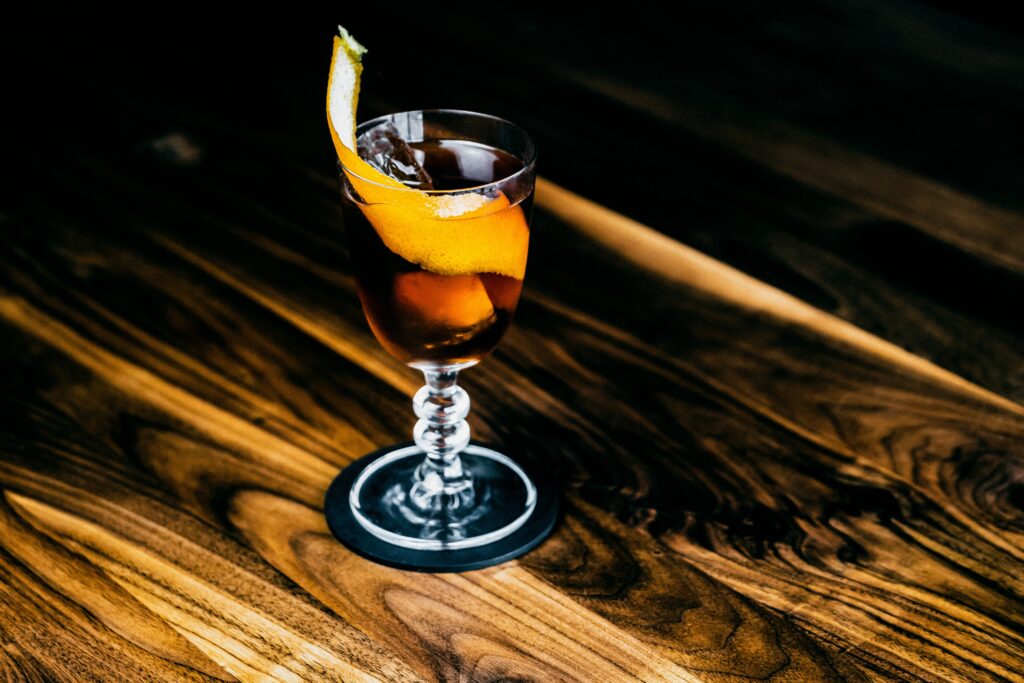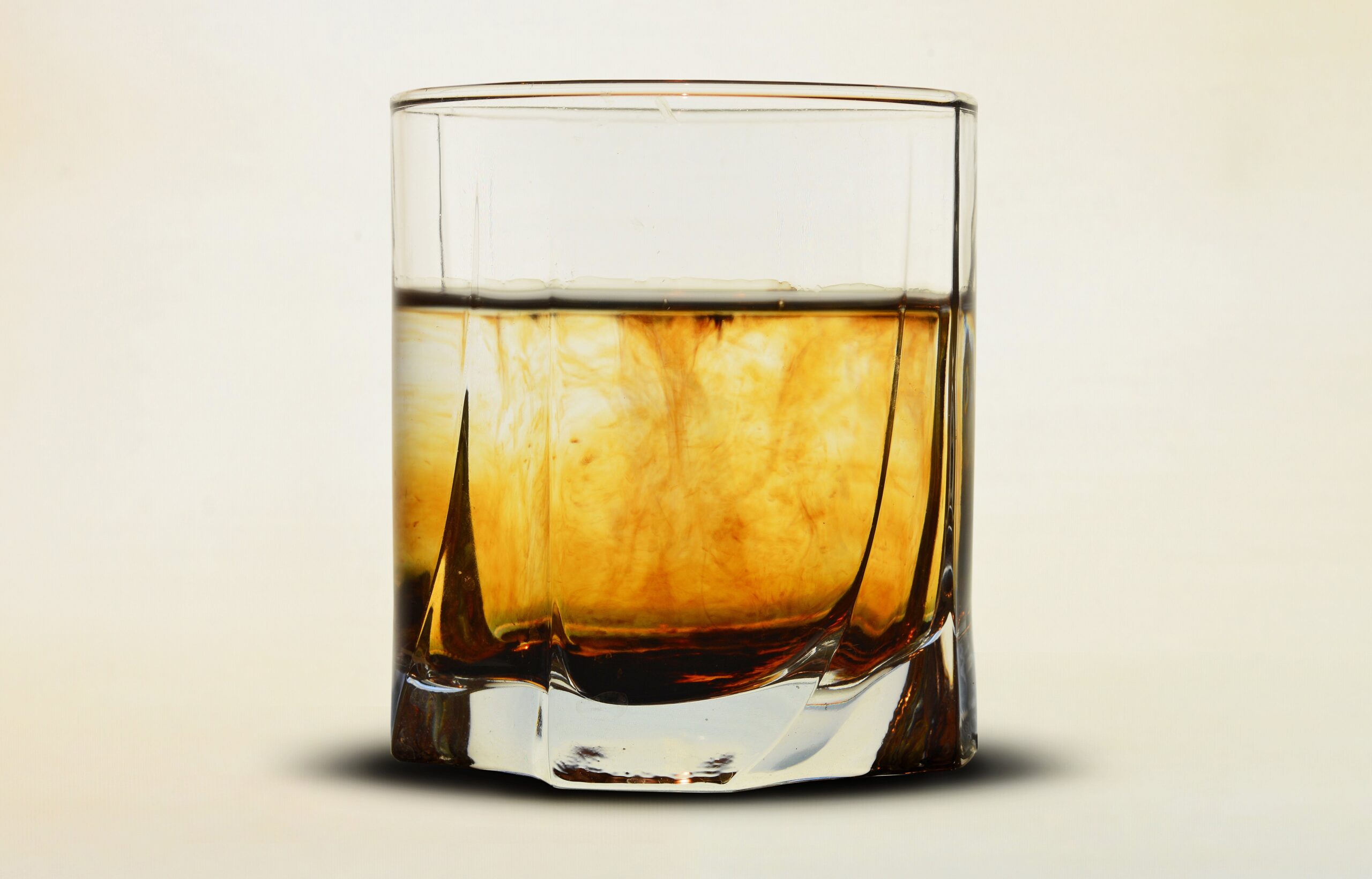Imagine strolling through the rolling hills of Kentucky, the crisp air filled with the warm, inviting scent of corn. It is here, amidst the golden fields, that a remarkable transformation takes place. From humble origins, bourbon emerges as a cherished and sought-after spirit, captivating the hearts and palates of enthusiasts worldwide. Delve into the intriguing journey of bourbon, as it undergoes a metamorphosis from a simple grain to a spirit steeped in tradition and revered for its rich flavors and timeless allure.
History of Bourbon
Origin of the term Bourbon
The term “Bourbon” has a fascinating origin that is deeply intertwined with American history. It is believed that Bourbon gets its name from Bourbon County, Kentucky, which was named after the French royal family, the House of Bourbon. In the late 18th century, distillers in Bourbon County began producing a particular style of whiskey that eventually came to be known as Bourbon.
Early production of corn whiskey
Before Bourbon took center stage, early American settlers were already producing corn whiskey. Farmers in the Appalachian region found that distilling surplus corn was a practical way to preserve their crops. These early versions of corn whiskey were far less refined than today’s Bourbon, with a strong and sometimes harsh flavor due to the lack of aging and quality control.
The introduction of aging in charred oak barrels
The real transformation of Bourbon came with the introduction of aging in charred oak barrels. It is widely believed that Reverend Elijah Craig, a Baptist minister and entrepreneur, played a significant role in this innovation. By aging the whiskey in these charred barrels, the spirit gained a smoother and richer flavor profile, as well as a distinct amber color. This aging process also allowed the whiskey to develop complex flavors from interaction with the wood, setting Bourbon apart from other spirits.
The Bourbon Act of 1964
Definition of Bourbon
The Bourbon Act of 1964 is a landmark piece of legislation that defines what Bourbon is, setting standards and regulations that establish its authenticity and integrity. According to the Act, Bourbon must be a distinctive product of the United States, made from a grain mixture that is at least 51% corn, and aged in new, charred oak barrels.
Requirements for labeling as Bourbon
To be labeled as Bourbon, the spirit must meet specific criteria. It must be distilled to no more than 160 proof, entered into the barrel for aging at no more than 125 proof, and bottled at no less than 80 proof. Furthermore, no additives are allowed, except for water that is used to bring the proof down before bottling.
Protection of the Bourbon industry
The Bourbon Act of 1964 played a crucial role in protecting the Bourbon industry from inferior imitations. It ensured that only distilled spirits meeting the specific standards could bear the name “Bourbon.” This protection helped establish Bourbon as a respected and globally recognized product, boosting its reputation and paving the way for extensive growth in the industry.

The Rise of Small Batch and Single Barrel Bourbons
Craftsmanship and attention to detail
Small batch and single barrel Bourbons have become highly sought after by whiskey enthusiasts due to their exceptional quality and attention to detail. Distilleries producing these expressions focus on craftsmanship and meticulous production methods, often relying on traditional techniques to ensure the highest level of quality in each bottle.
Distinctive flavors and quality control
One of the key appeals of small batch and single barrel Bourbons is their distinct flavors. Each batch or barrel has its own unique personality, influenced by factors such as the grain, yeast strain, aging environment, and blending methods. This individuality allows connoisseurs to explore a vast range of taste profiles, from rich and robust to delicate and nuanced.
Growing popularity among whiskey enthusiasts
In recent years, small batch and single barrel Bourbons have gained tremendous popularity among whiskey enthusiasts. Their limited availability and exceptional quality have captured the attention of collectors and connoisseurs alike. This growing demand has led to more distilleries offering these unique expressions and has spurred innovation in blending and aging techniques.
The Role of Kentucky in Bourbon Production
Unique climate and limestone-rich water
Kentucky’s climate and water sources play a significant role in Bourbon production. The state’s hot summers and cold winters help in the aging process, as the whiskey expands into the charred oak barrels during the heat and contracts during the colder months, allowing for greater interaction with the wood. Additionally, limestone-rich water, abundant in Kentucky, is essential for mashing the grains and creating the distinct flavor profile of Bourbon.
Traditional production methods and heritage
Kentucky’s long-standing tradition and heritage in Bourbon production make it the heartland of the industry. Many of the world’s most renowned Bourbon distilleries have deep roots in the state, with some dating back to the 18th century. Kentucky’s distilleries proudly uphold traditional production methods, passing down knowledge and techniques from generation to generation, ensuring the consistent quality of their spirits.
Bourbon tourism and distillery visits
Kentucky’s prominence in Bourbon production has made it a top destination for whiskey enthusiasts and tourists alike. Visitors can explore the picturesque Kentucky Bourbon Trail, which includes several distilleries offering tours and tastings. These experiences provide a unique opportunity to learn about the history, production methods, and aging techniques that make Kentucky Bourbon so exceptional, further deepening the appreciation for this beloved spirit.

Trends and Innovations in Bourbon
Flavored and infused Bourbons
In recent years, there has been a surge in the popularity of flavored and infused Bourbons. Distilleries have experimented with various flavor profiles, incorporating ingredients such as honey, maple, spices, and fruits to create intriguing expressions. These flavored Bourbons offer a modern twist on traditional Bourbon, appealing to a broader consumer base and expanding the possibilities for cocktail creations.
Experimental aging techniques
Whiskey producers have also ventured into experimental aging techniques to push the boundaries of what Bourbon can be. From utilizing different types of oak barrels, such as wine or sherry casks, to exploring accelerated aging processes, distillers are constantly seeking innovative ways to enhance flavors and create unique tasting experiences for whiskey enthusiasts.
Cask strength and limited edition releases
Cask strength Bourbons, bottled at their natural proof without dilution, have gained popularity for their intense and robust flavors. These Bourbons give whiskey lovers the opportunity to savor the spirit in its purest form, showcasing the full range of flavors and aromas. Limited edition releases further drive excitement, with distilleries offering unique expressions that are highly sought after by collectors and enthusiasts.
Bourbon’s Global Appeal
Increasing demand and exportation
Bourbon’s popularity is not limited to the United States; it has seen a significant surge in demand worldwide. The craftsmanship, quality, and distinctive flavors of Bourbon have captivated whiskey lovers across the globe, leading to increased exportation and distribution in various international markets.
International recognition and awards
Bourbon’s international appeal is further bolstered by the recognition it has received on the global stage. Prestigious competitions and awards have consistently recognized the excellence of Bourbon, solidifying its position as a world-class spirit. These accolades highlight the craftsmanship and dedication of distilleries in producing exceptional Bourbons that rival some of the finest spirits in the world.
Influence on whiskey cultures worldwide
Bourbon’s rise in popularity has had a profound impact on whiskey cultures worldwide. The unique characteristics and flavors of Bourbon have influenced distillers in other countries, leading to the development of their own variations of American whiskey. This cross-pollination of ideas and techniques has brought diversity and innovation to the whiskey industry, enriching the global palate for whiskey connoisseurs.

Cocktail Culture and Bourbon
Classic Bourbon cocktails
Bourbon has been a staple in classic cocktails for decades, lending its richness and complexity to iconic drinks. The Old Fashioned, Manhattan, and Mint Julep are just a few examples of cocktails that showcase the versatility and timeless appeal of Bourbon. These classic recipes have stood the test of time, with Bourbon remaining essential to their authentic flavors.
New interpretations and mixology trends
In recent years, mixologists have taken Bourbon cocktails to new heights with innovative interpretations and mixology trends. From barrel-aged cocktails to creative infusions and unique flavor combinations, bartenders continuously push the boundaries of what can be achieved with Bourbon in a glass. These modern twists on traditional cocktails offer fresh experiences for cocktail enthusiasts, encouraging them to explore the versatility and complexity of Bourbon.
Bourbon as a versatile cocktail ingredient
Bourbon’s versatility extends beyond classic and contemporary cocktails. Its rich flavors and smooth profile make it a versatile ingredient in a wide range of mixed drinks. From refreshing highballs to complex tiki-inspired concoctions, Bourbon can be used as a base spirit or an accentuating component, providing depth and character to any cocktail creation.
Bourbon Collecting and Investment
Rare and collectible Bourbons
As Bourbon’s popularity has soared, so has the interest in collecting rare and highly sought-after expressions. Limited edition releases, single barrel offerings, and discontinued favorites are among the treasures coveted by Bourbon collectors. These rare Bourbons often command premium prices due to their scarcity and desirability, making them prized possessions for enthusiasts and investments for those with an eye toward the future.
Secondary market prices and auctions
The rise of Bourbon collecting has created a secondary market that operates on supply and demand dynamics. Rare bottles can command significant prices, with collectors and investors willing to pay a premium to acquire these unique finds. Auctions have become popular platforms for buying and selling rare Bourbons, providing opportunities for enthusiasts to expand their collections and for investors to capitalize on the growing market.
Investment potential and considerations
Bourbon’s increasing value and demand have sparked conversations about its investment potential. However, investing in Bourbon requires careful consideration and research. Factors such as rarity, brand reputation, age, condition, and provenance all contribute to a bottle’s investment value. It is essential to understand the market dynamics and consult with experts to make informed decisions when exploring Bourbon as an investment opportunity.
Bourbon’s Impact on American Culture
Celebration of Bourbon in literature and film
Bourbon has long been celebrated in American literature and film, becoming a symbol of American culture and tradition. Numerous authors, including famous names like Mark Twain and F. Scott Fitzgerald, have immortalized Bourbon in their works, often associating it with themes of indulgence, masculinity, and Southern charm. In film, Bourbon has had starring roles in iconic scenes, further cementing its place in American popular culture.
Bourbon as a symbol of American tradition
Bourbon has become synonymous with American tradition and craftsmanship. Its rich history, deep-rooted heritage, and meticulous production methods showcase the heart and soul of American whiskey-making. As a result, Bourbon has come to represent the spirit of American ingenuity, resilience, and cultural identity, both domestically and abroad.
Community and social aspects of bourbon consumption
Bourbon has a unique capacity to bring people together, fostering community and camaraderie among enthusiasts. From social gatherings centered around sharing and tasting Bourbon to whiskey clubs and online communities, the world of Bourbon provides a platform for connection, shared experiences, and a mutual appreciation for the craftsmanship and artistry of this beloved spirit.
Sustainability and Ethical Practices in Bourbon Production
Environmental initiatives by distilleries
Distilleries are increasingly embracing sustainable practices to reduce their environmental impact. From implementing water conservation measures to utilizing renewable energy sources, distilleries are making strides towards becoming more eco-friendly. These initiatives are driven by a commitment to preserve the natural resources that contribute to the production of Bourbon, ensuring its sustainability for future generations.
Sourcing of local ingredients
Many Bourbon distilleries prioritize the sourcing of local ingredients, emphasizing the importance of supporting local farmers and communities. By utilizing locally grown corn, rye, and wheat, distilleries strengthen regional economies while also promoting traceability, ensuring the authenticity and quality of their spirits. This emphasis on local sourcing also contributes to the unique flavor profiles of Bourbons, as terroir plays a role in the characteristics of the grains.
Support for local communities and craftsmanship
Bourbon distilleries serve as pillars of their respective communities, contributing to economic growth and providing job opportunities. Through their operations, distilleries contribute to the preservation of local craftsmanship, supporting cooperages, barrel makers, and other skilled artisans. By prioritizing ethical practices and community engagement, Bourbon distilleries embody a commitment to sustainability and the well-being of their surroundings.
In conclusion, the history of Bourbon traces its roots back to early American settlers and the ingenuity of distillers in Bourbon County, Kentucky. Through centuries of refinement, the introduction of aging in charred oak barrels, and the establishment of regulations that define the spirit, Bourbon has evolved into a globally recognized and beloved treasure. Whether savored neat, enjoyed in cocktails, or collected as prized possessions, Bourbon’s rich flavors, cultural significance, and commitment to quality continue to captivate whiskey enthusiasts around the world. From its origins to its impact on American culture and sustainable production practices, Bourbon’s journey is a testament to the enduring legacy of this exceptional spirit.
